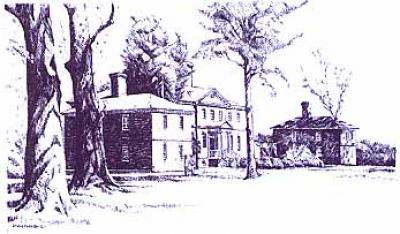Blandfield
From Tappahannock, intersection of Queen St. (Rt. 360) and Rt. 17 take Rt. 17 north 7 miles to Beverley Road. Turn right to house.
Blandfield was built on a 3,500 acre plantation on the Rappahannock River between 1769 and 1773 by Robert Beverley II and remained in that family until 1983 when Mr. and Mrs. James C. Wheat, Jr. purchased the house. They began extensive and meticulous restoration under the counsel and direction of the staff of Colonial Williamsburg. Although there is no architect who has been linked to the building of this Palladian house, it is known that the plan was adapted from specific plates in the influential 1728 Book of Architecture by English architect James Gibbs. Drum House in Scotland also has been considered to be a prototype for Blandfield. Described in the Virginia Landmarks Register as belonging to the important group of mid-Georgian Tidewater mansions characterized by the five-part plan that links flanking dependencies to the main house by hyphens or one-story corridors, Blandfield was one of the largest houses in Virginia at the time it was built.
Today, brilliant color, striking wallpaper design, and elaborate mill-work give the massive formal interior a vastly different appearance from what the Wheats first encountered when they bought the property. During the 1840s, the interior paneling and molding had been replaced with plain Greek Revival trim and the two stairways had been modified in the 19th century style. Restoration and furnishing has been ongoing for 13 years and continues today based on historical research, the Beverley family papers, and scientific investigation. Of particular interest is the yellow floral wallpaper in the south parlor, which was hung using 18th century techniques. The documentary paper was made by pasting together 18 by 24-inch squares to create rolls of paper. The paper was then painted with the background color and shipped to London where it was printed with 200-year-old wood blocks. Blandfield is listed in the Virginia Historic Landmark Register and the National Register of Historic Places. Open for the first time to Historic Garden Week visitors. Mrs. James C. Wheat Jr., owner.

